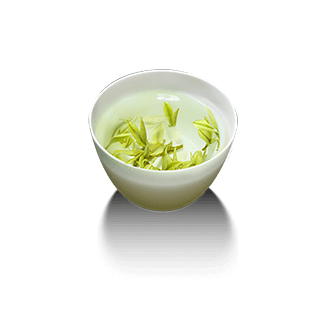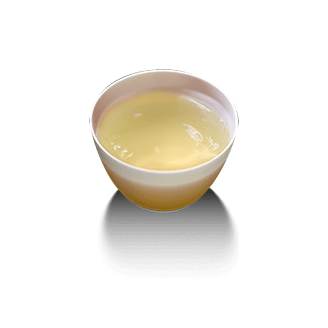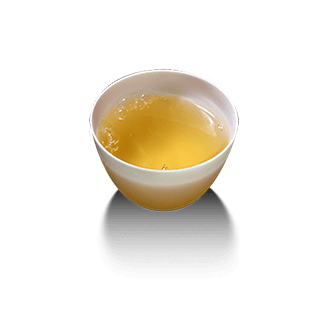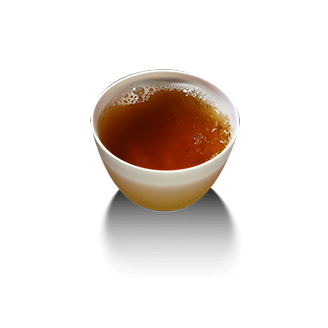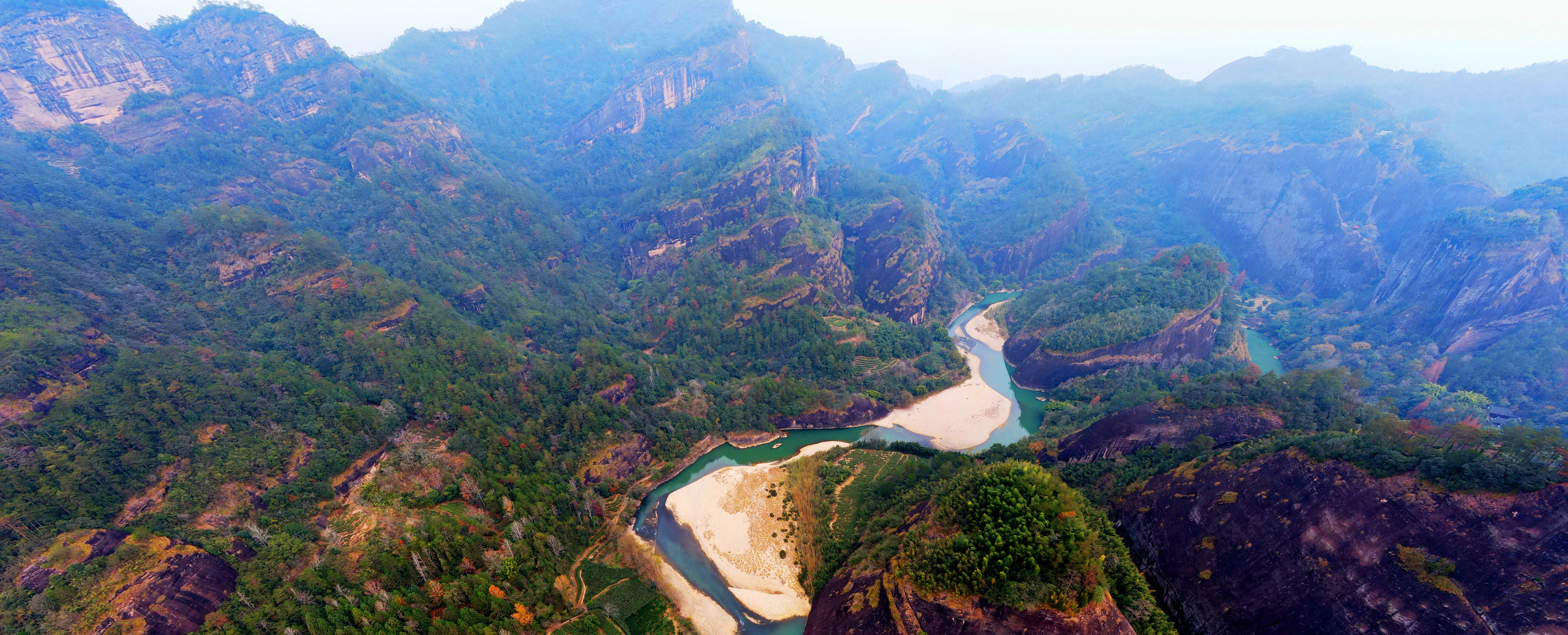




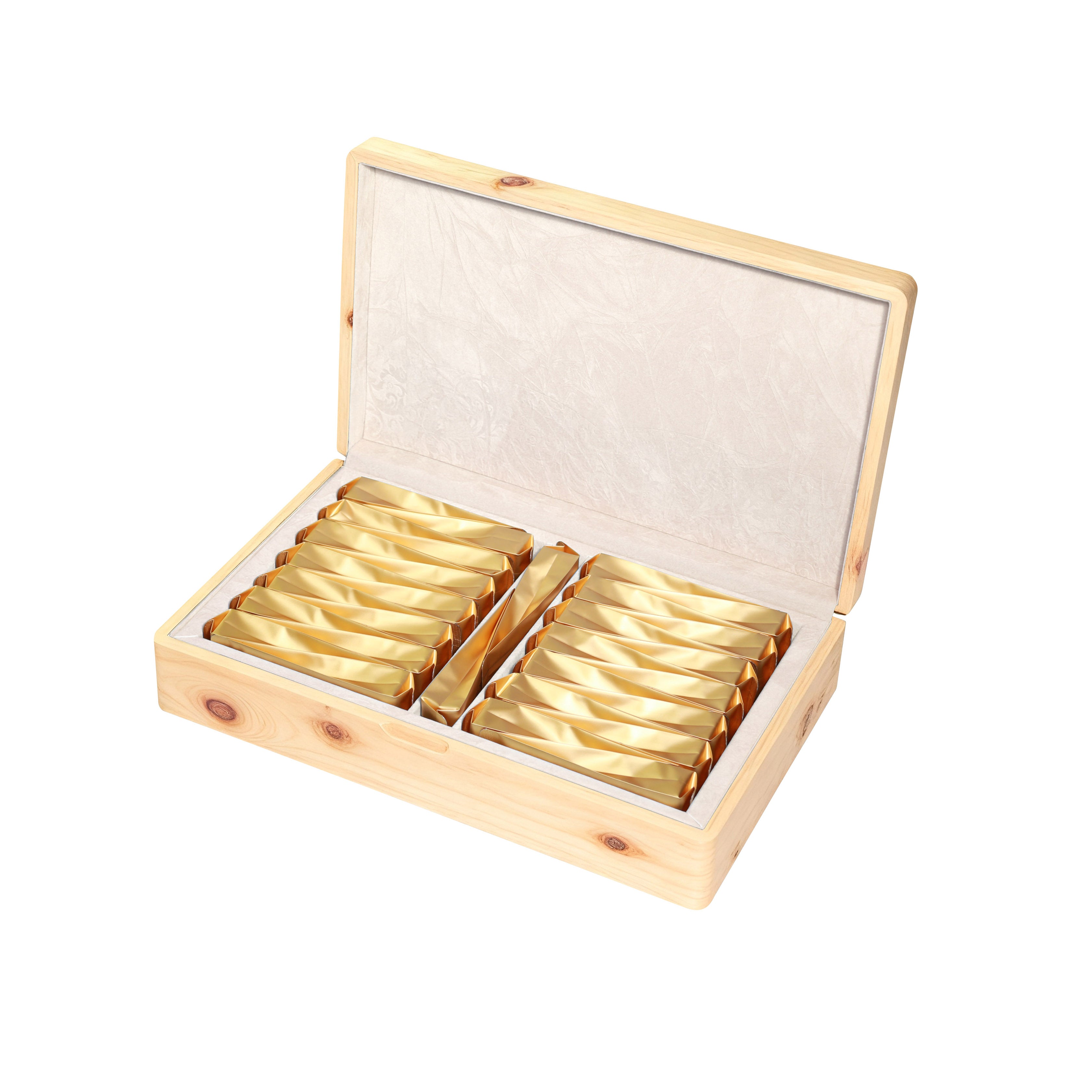
ICH Inheritor Wang Shunming Crafted Full-roast Da Hong Pao







ICH Inheritor Wang Shunming Crafted Full-roast Da Hong Pao
ICH Inheritor Wang Shunming Crafted Full-roast Da Hong Pao

Professor of Tea Science;
One of the Principal Drafters of the National Standard for Wuyi Rock Tea;
Producer of the National Standard Sample of Da Hong Pao;
Author of Monographs on Da Hong Pao;
Senior Tea Taster;
He was entrusted with managing the 6 mother Da Hong Pao trees for 21 years.
National-level ICH inheritor of Da Hong Pao craft
Wang Shunming

Covering 36 mu (about 2.4 hectares), this garden has no pavilions or terraces—only tens of thousands of tea trees exuding fragrance. Obsessed with tea, the garden owner has nurtured over a hundred varieties here since 1953, allowing them to take root and thrive. "Most are planted by veteran tea growers, who weed annually to find and preserve rare strains." Many tea trees were dug out from mountain grass by master craftsmen and carefully cultivated.
I have known Master Wang Shunming for many years. He is an open-hearted and passionate person. When talking about this tea garden, he speaks with immense familiarity, his eyes shining brightly. Golden willow branches sway gently; Buzhichun (Unknown Spring) sprouts late; Baijiguan (White Cockscomb) looks like snow; Foshou (Buddha's Hand) has broad leaves; Guazijin (Melon Seed Gold) is elegant; Queshe (Sparrow's Tongue) is delicate—each and every plant is a revived life.
In Master Wang’s wife’s memory, this land was originally the Chong'an Tea Factory founded in 1938. She started picking and making tea here in her youth, and her prime years have long been intertwined with the fragrance of tea.
From Jinsuoshi (Golden Key) to Tieluohan (Iron Arhat), every tea name holds a story—when she tells them, the tea artists at Dayatang are transported, their minds wandering with vivid imagination.
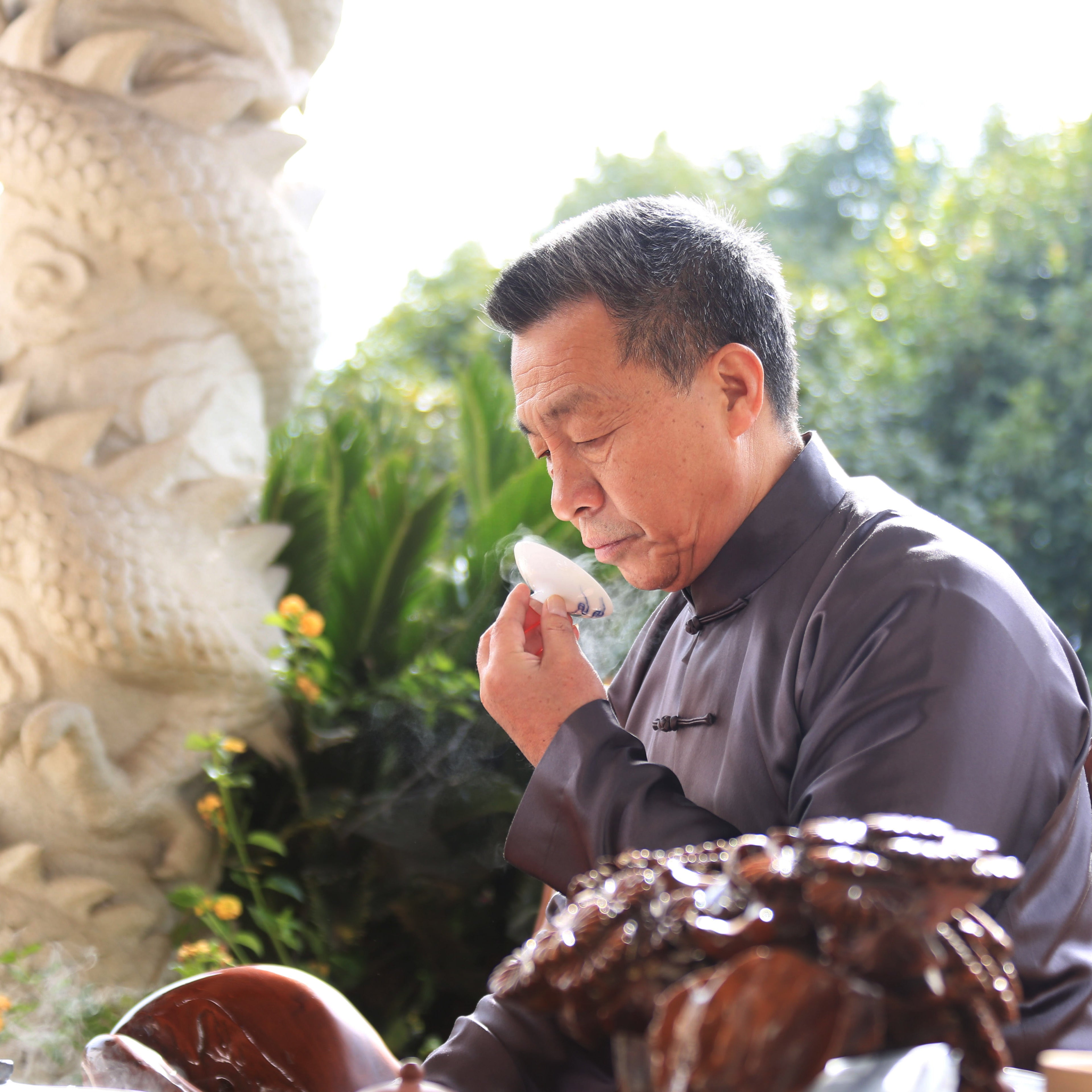
Master Wang’s family feast is the warmest meal in my heart. Though not cooked by a famous chef, the fragrant braised pork with thick slices, the laughter of the whole family sitting around the table, and Master Wang’s hearty chuckles—all these are filled with the warmth of celebrating Chinese New Year at home.

After the meal, talking about aged tea, Master Wang joked, "The so-called aged tea is nothing but the tea that didn’t sell in the year it was made." He then added with a smile, "Yet it tastes fantastic now." This lighthearted remark reveals another secret of Wuyi Rock Tea—only teas with thorough roasting and full fermentation can mellow over the years, developing a richer and more profound flavor.
Most of Master Wang’s teas undergo thorough full roasting. The rigor of this roasting process is precisely the soul that defines the essence and backbone of Wuyi Rock Tea.

Master Wang’s enthusiasm for conversation grew stronger, so we moved to the workshop. He demonstrated while explaining, summarizing the core secrets in two words: "Zuoqing (Leaf Withering & Fermentation) and roasting."
"Zuoqing" follows the principle of "adapting to weather conditions and leaf state"—through shaking to release aroma, nurturing to develop aroma, and fixing to lock aroma, it shapes the tea’s initial charm, where floral and fruity notes blend harmoniously.
As for roasting, it embodies the poetic essence: "When charcoal flames blaze, the cliff tea’s charm awakens; as tea smoke drifts, subtle fragrance lingers." Through the power of fire, it balances the variety’s inherent aroma and the mountain terroir, finalizing the tea’s distinctive character.
Wuyi Rock Tea boasts three layers of aroma, and its leaves exhibit three aspects of vitality—all dependent on mastering the precise degree of roasting. In reality, each master has their own standard.
Master Wang favors full roasting, while I currently prefer medium roasting.
A true tea connoisseur must understand that "there is no supreme tea—only what suits the discerning palate." To "discover the tea’s beauty amid diverse flavors and perceive human elegance through differing tastes" is the ultimate realm to pursue.
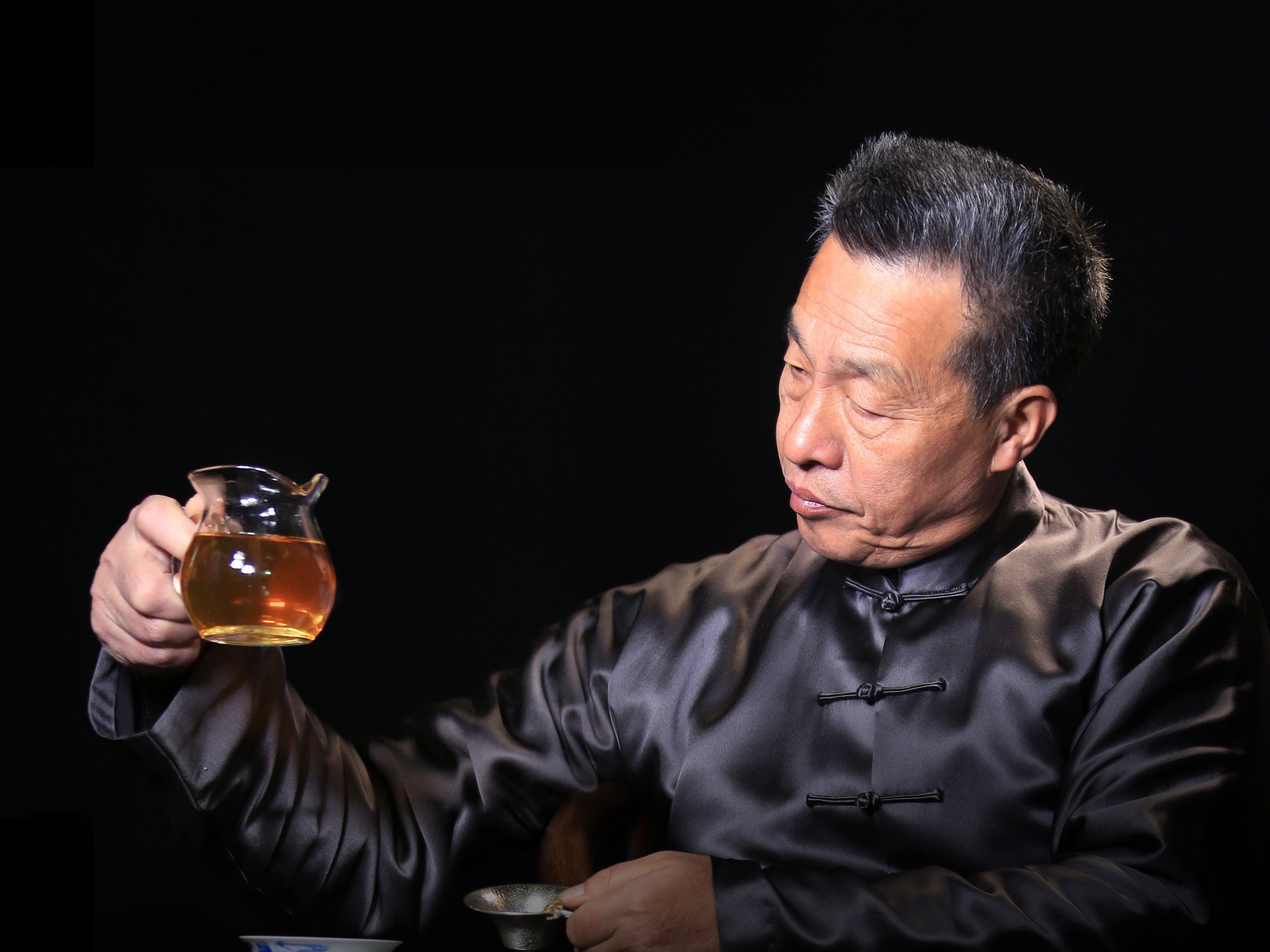
When talking about "intangible cultural heritage (ICH)", Master Wang Shunming’s words were simple yet profound: "Only when our motherland is great can we be ICH inheritors. Otherwise, I’m just a craftsman—nothing extraordinary."
These words, like fine tea, leave a lasting aftertaste..
Over the past decade, spanning 100,000 miles, my tea-seeking journey has not been a leisurely trip, but a arduous trek—a profound exploration of tea culture. Ten years is neither long nor short: some of the old friends I filmed have passed away, and some of my closest companions have ceased to walk this path with me, leaving me inevitably sorrowful. We are no more than a grain of sand in the vast sea, mourning the brevity of life.
To date, we have visited nearly a hundred inheritors of tea-making and tea utensil-crafting techniques. They are like stars scattered along the river of tea culture. Stepping into their lives, we have encountered joy and moved by their stories—each person possesses unique experiences and expertise.
In comparison, the people of Wuyi Mountain are truly blessed. This land is endowed with exquisite natural beauty; Wuyi Rock Tea nurtured by heaven and earth, coupled with masterful craftsmanship, has inspired countless later generations to wield their brushes and pens. It is through their efforts that this garden of tea fragrance and centuries of literary heritage endure.
Da Hong Pao
Crafted by ICH Inheritor Wang Shunming
Appreciation
Year : 2023
Grade : Premium Grade
Maker : National-level ICH inheritor of Da Hong Pao craft Wang Shunming
Origin : Wang Shunming's Family-Owned Tea Garden, Wuyi Mountain
Variety : Da Hong Pao
Craftsmanship :
- Full-roast baking is the core craft of Wuyi Rock Tea: : it enhances the tea’s inherent charm and improves its storage stability.
- Value of the Full-Roast Craft: Adhering to the principle of "low-temperature slow roasting" (starting at 80-85℃ and gradually cooling to 60℃ for thorough roasting), Wang Shunming ensures the tea fully absorbs the charcoal aroma while preserving its variety-specific characteristics. This avoids common issues with over-roasted tea, such as burnt flavors and inconsistent liquor taste.
Dry tea appearance : Firm and dark, with a subtle luster.
Tea liquor color : bright translucent orange-red
Aroma : Prominent roast aroma intertwined with subtle variety-specific notes, deep and layered.
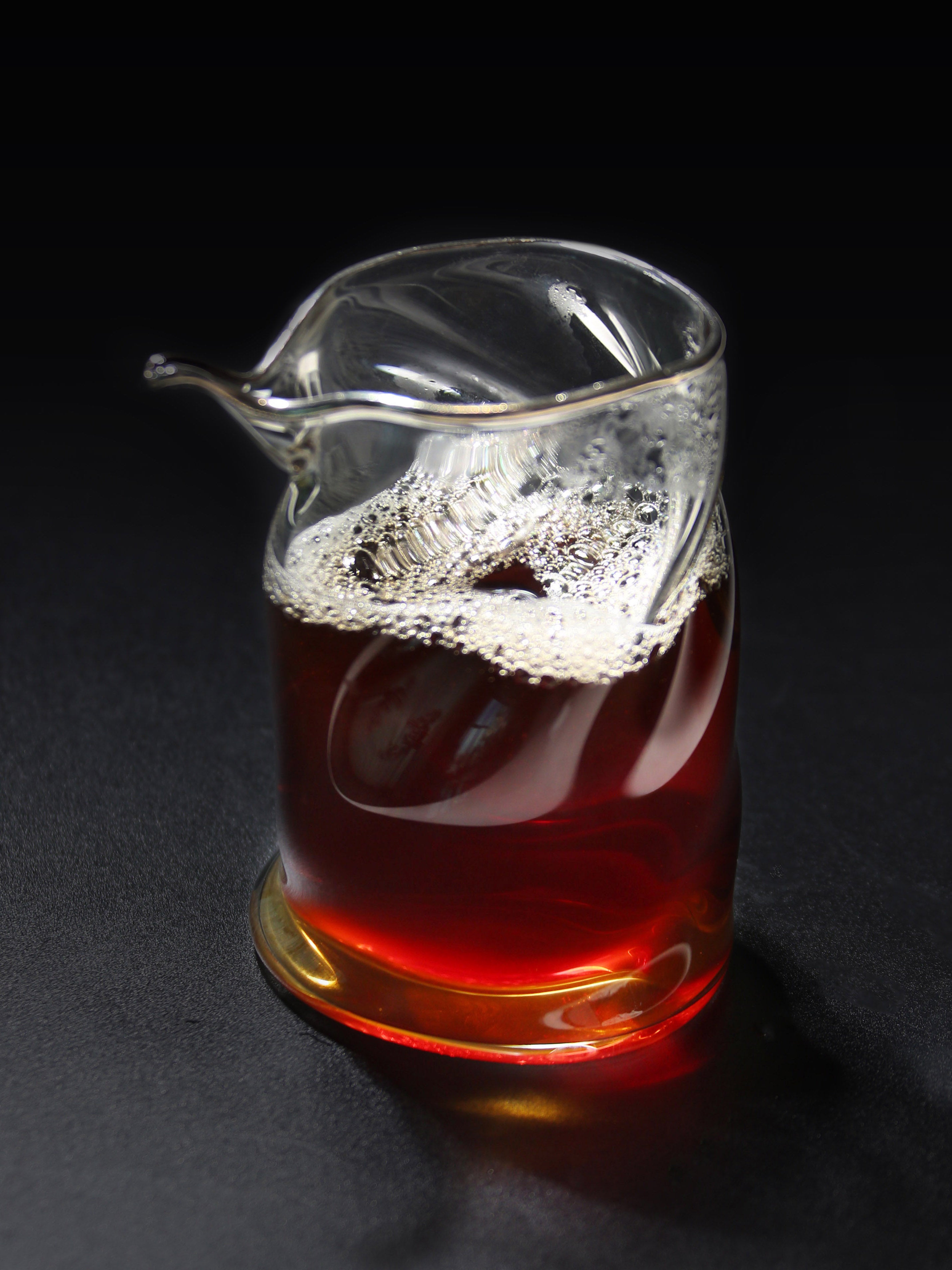
The broth of Master Wang Shunming’s fully roasted Da Hong Pao is clear, bright and rich red.
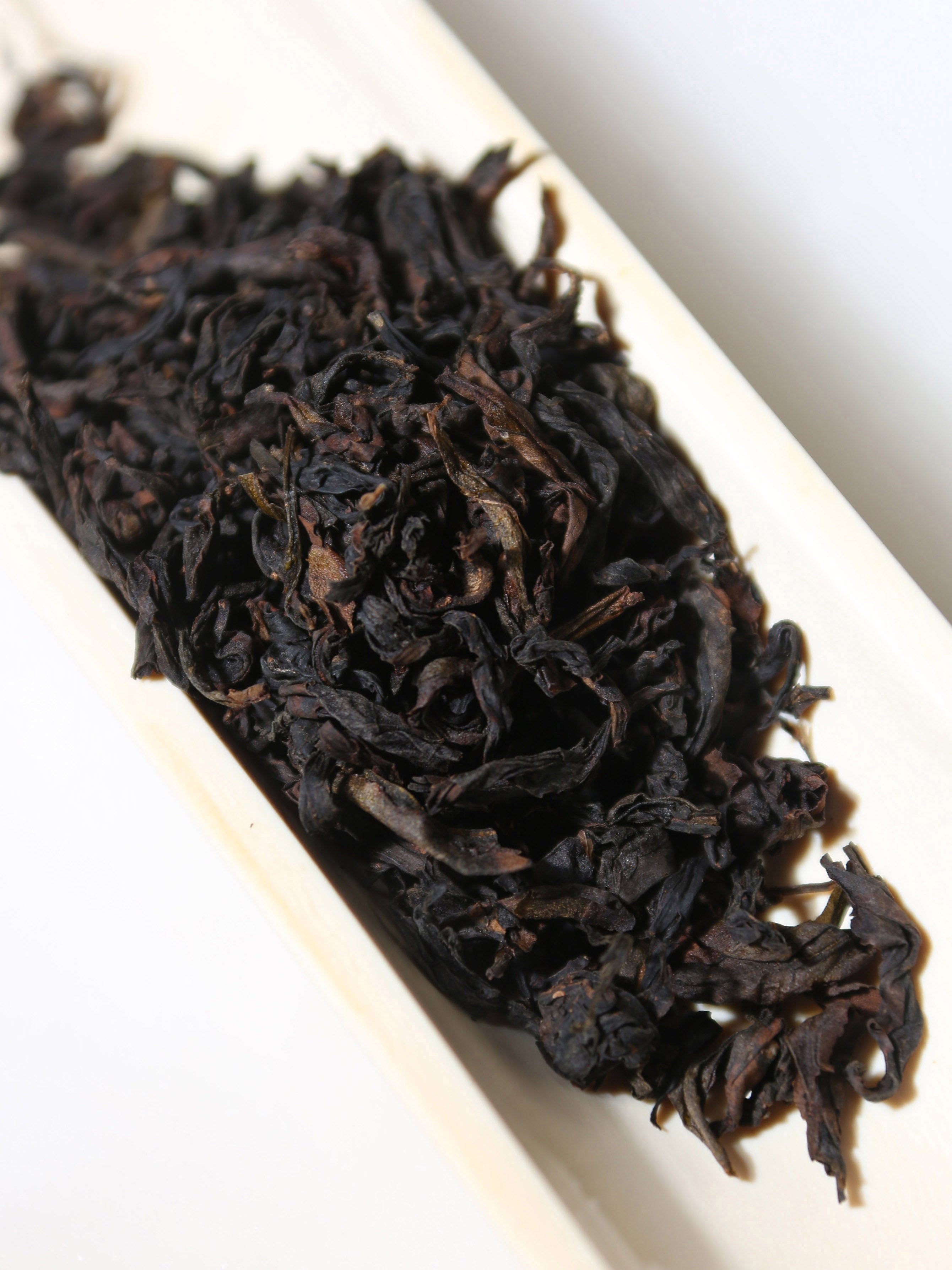
Master Wang’s roasting is thorough—his tea leaves are perfectly dried, with a tight, neat shape and a strong sense of weight. Only a tiny amount of crumbs can be found at the bottom.
Brewing
Brewing

Rock Tea Brewing Guide
I. Applicable tea types:
Recommended:
Aged Wuyi Rock Tea (over 5 years), such as aged Congou Shuixian and aged Da Hong Pao.
Heavy-roast charcoal-baked Rock Tea (full roast/high roast).
Tea leaves after 5-6 infusions (used leaves).
Not Recommended:
Fresh fragrance-type new Rock Tea (light roast/middle roast).
High-aroma varieties (e.g., Huangguanyin).
II. Tea Decoction Utensils
Decoction Vessel: Glass teapot / clay teapot + electric ceramic stove (avoid stainless steel teapots to prevent affecting the tea liquor color).
Specifications: 300-500ml teapot, 5-8g tea leaves (tea-to-water ratio 1:50 ~ 1:80).
Auxiliary Tools: Tea strainer (for filtering residues), tea tongs (for handling used tea leaves).
III. Decoction Steps (Suitable for Aged/Heavy-Roast Tea)
Warm the Pot & Awaken the Tea: Rinse the teapot with boiling water. Add 5-8g of dry tea (1/3 less than for infusion) and dry-roast over low heat for 10-20 seconds to activate the aroma.
Add Water & Bring to Boil:
Cold Water Start: Pour room-temperature purified water into the pot, bring to a boil, then switch to low heat. Simmer gently for 1-2 minutes (stop when the liquor turns orange-red and translucent; over-boiling causes astringency).
Hot Water Start: Bring water to a boil first, add the tea, boil for 1 minute, then turn off the heat and let it steep for 1 minute (ideal for beginners).
Serve & Refill: Strain the liquor and drink while hot. The tea can be re-decocted 2-3 times, with the second decoction time shortened to 30 seconds - 1 minute.
IV. Key Points and Taboos
Key Tips :
Water Selection: Use qualified purified water (avoid alkaline mineral water).
Temperature Control: Maintain a gentle simmer (crab-eye boil stage) to prevent intense boiling from extracting astringent substances.
Post-Decoction: Allow the tea to rewarm if cooled—astringency softens for a smoother taste.
Taboos :
Those with an empty stomach or insomnia should limit strong brews (pair with tea snacks).
Summarize
Choose the right tea (aged/heavy-roast), control heat properly (gentle simmer and slow decoction), and separate used tea leaves appropriately. This brings out the rich, mellow throat rhyme of Wuyi Rock Tea, making it ideal for seasoned tea lovers.
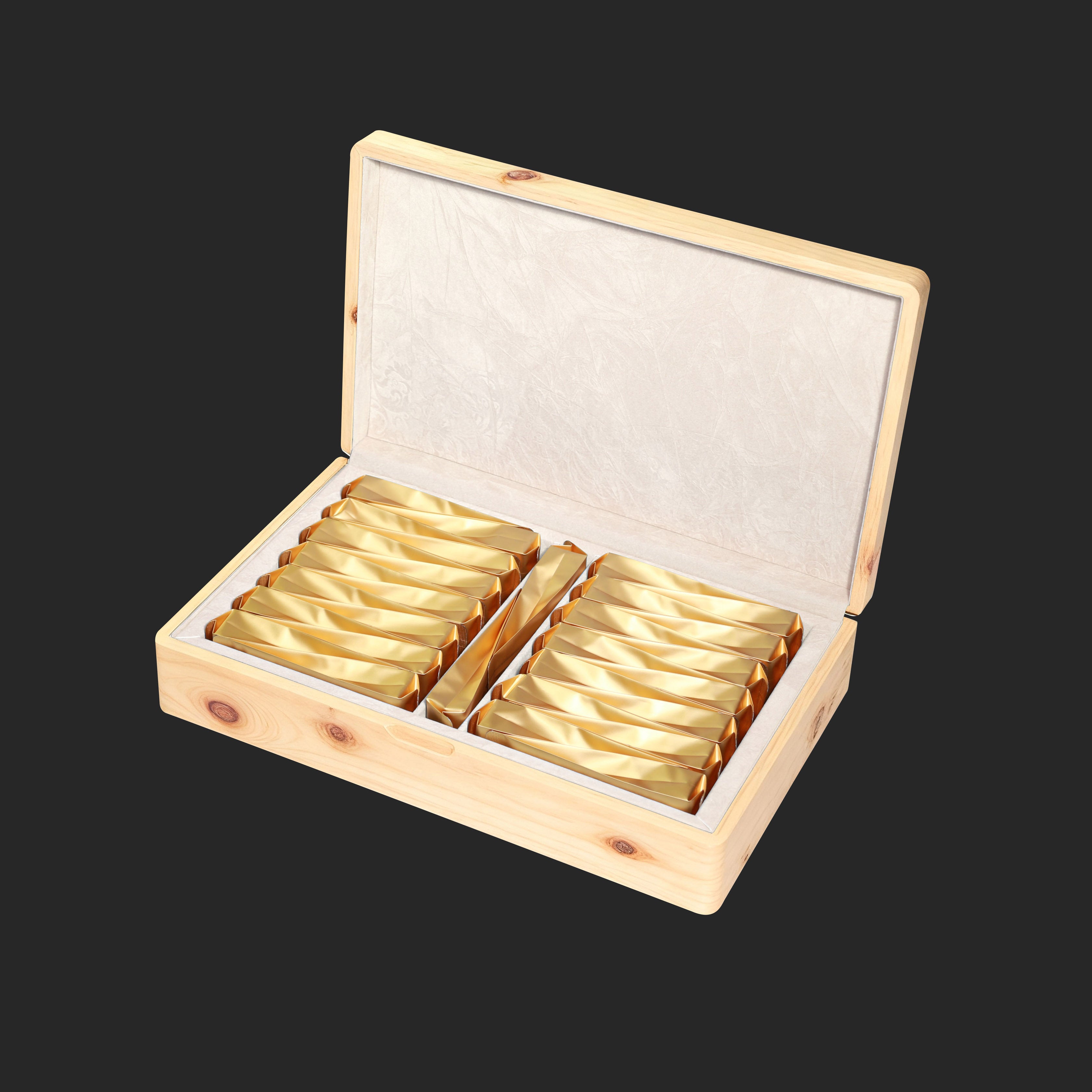
Pouch packaging: Blocks oxygen, light, moisture. Preserves original aroma, nutrients. Longer shelf life.
Storage

Stable, dry, light-proof and odor-free
Da Hong Pao (a representative of Wuyi Rock Tea, semi-fermented) requires storage adjustments based on roasting intensity (light/middle/full roast).
The core principles are to prevent moisture absorption, odor contamination and oxidation—full-roast Da Hong Pao can improve in quality through proper storage.
I. General Storage Principles
Da Hong Pao is highly sensitive to temperature, humidity, light and odors, and must follow the principles of "stability, dryness, light protection and odorlessness". Specific parameters are as follows:
Temperature: 20-25℃, avoiding fluctuations of ±5℃ (to prevent oxidation or condensation leading to mold).
Humidity: 50%-60% (mold-prone above 65%, loss of activity below 45%).
Light: Complete light protection (to prevent ultraviolet rays from damaging tea polyphenols, which makes the tea liquor astringent).
Odors: Keep away from spices, cooking fumes, etc. (tea leaves are porous and prone to irreversible odor contamination).
Air Permeability: Sealed for short-term storage (within 1 year); slightly ventilated for long-term storage (full-roast tea for over 1 year) (to prevent moisture accumulation or aroma loss).
II. Classification Storage by Roasting Intensity
- Light-Roast Da Hong Pao (Prominent Orchid/Fruity Aromas)
Characteristics: Contains 7%-8% moisture. Aroma fades easily and has poor storage stability.
Storage Method: Consume within 3-6 months. Seal in aluminum foil bags and place in airtight containers, storing in a cool area (away from kitchens/balconies).
Taboo: Do not refrigerate (condensation forms during thawing, causing a stale odor). - Middle-Roast Da Hong Pao (Balanced Aroma and Taste)
Characteristics: Contains 6%-7% moisture. More stable than light-roast tea, with a storage life of 1 year.
Storage Method: Divide into 5-10g portions wrapped in rice paper, store in ceramic/tin cans (leave a 1-2mm gap). Ventilate for 3-5 minutes monthly.
Shelf Life: Best consumed within 1 year (roast aroma and rock rhyme diminish after expiration). - Full-Roast Da Hong Pao (Caramel/Woody Aromas, Rich Rock Rhyme)
Characteristics: Contains 5%-6% moisture. Stable and suitable for aging (3-5 years, developing aged/medicinal aromas).
Storage Method:
Initial stage (1-3 months): Wrap in rice paper and place in purple clay/coarse pottery jars (leave a loose 3-5mm gap). Ventilate weekly to reduce "roast heat".
Long-term storage (over 1 year): Ventilate for 5 minutes quarterly. Place unscented desiccants in high-humidity environments.
Taboo: Do not store with light/middle-roast teas (to avoid irreversible odor contamination).
III. Storage Container Selection
Aluminum foil sealed bags : Suitable for short-term storage (within 3 months) of light-roast and middle-roast teas. Features strong sealing, effectively isolating moisture and odors.
Airtight Ceramic Jars: Ideal for storing middle-roast teas for 6-12 months. Lightproof and odorless, requiring only regular ventilation.
Unglazed purple clay jar : Specifically designed for aging full-roast teas for over 1 year. Provides uniform air permeability and humidity regulation; must be deodorized before use.
Food-grade tin cans : Compatible with storing middle-roast and full-roast teas for 6-24 months. Balances sealing and air permeability while preventing oxidation, with the only drawback of higher cost.
Lidded Glass Jars: Only suitable for short-term consumption (within 1 month) of teas of all roasting intensities. Allows visual inspection of tea condition but requires additional light shielding, with average sealing performance.
IV. Common Storage Mistakes
Storing tea in the refrigerator: High humidity and mixed odors in the refrigerator, coupled with temperature differences, easily cause condensation on tea leaves leading to mold. Additionally, the tea’s aroma becomes difficult to release.
Using Ordinary Plastic Bags for Storage: Prone to absorbing plastic odors and moisture. The tea will lose its "rock texture and floral aroma" within 1-2 weeks.
Fully sealed roasted tea: Blocks the tea’s "breathing" process, leading to moisture accumulation in the container and a stale, moldy odor.
Mixing with other Tea Types: Aromas and components of different teas overlap (e.g., the aged aroma of Pu-erh masks the roast aroma of Da Hong Pao), resulting in the loss of the tea’s original flavor.
V. Quality Inspection After Storage (Mandatory Regular Check)
Look: Inspect tea leaves for white/green/black mold spots.
Smell: Identify abnormal odors such as moldy or sour smells. For slight stale odors, spread the tea out to air for 1-2 hours before re-storing.
Brewing: Taste the tea liquor—if it becomes astringent or the aroma fades, consume the tea as soon as possible.
Summary
Light-roast tea: Consume within 3-6 months (sealed tightly to retain fresh aroma).
Middle-roast tea: Balance sealing and ventilation (best consumed within 1-2 years).
Full-roast tea: Slightly ventilate for aging (suitable for 5+ years of storage).






